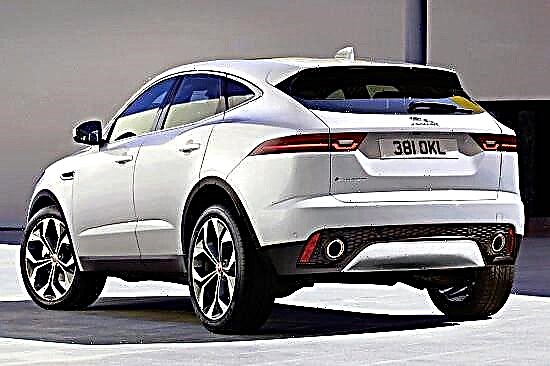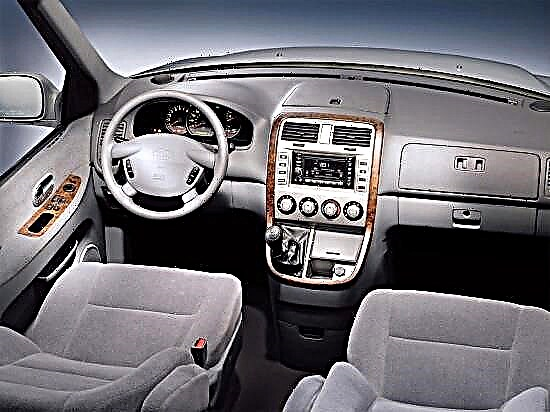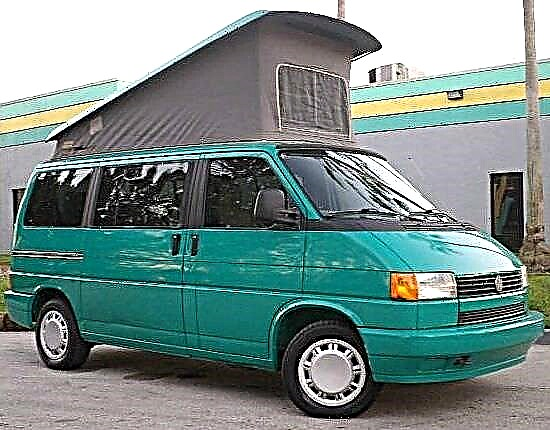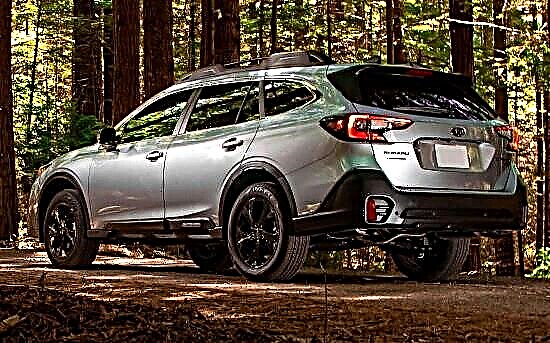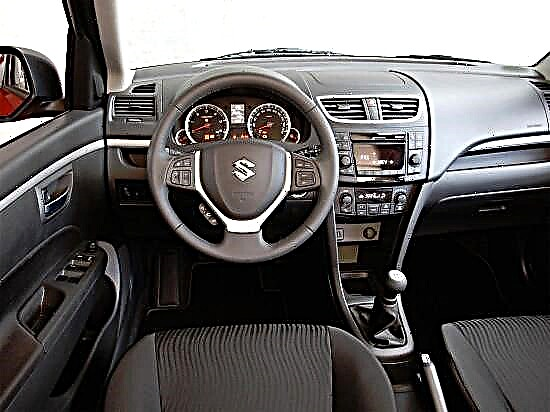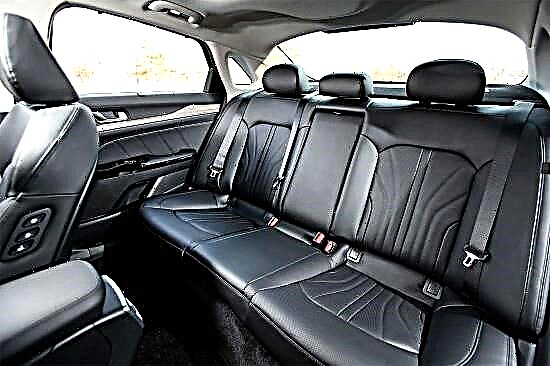Ratings of cars and auto products
Reviews, comparisons & tips for motorists
Until the tenth generation, the Toyota Corolla was purposefully going to become the best-selling car in the world. But then the Japanese decided for some reason to make a knight's move - to give the hatchback a new name, leaving the old one only for a car with a sedan body. And although they had the same chassis, the cars turned out to be different. How successful this decision was is not for us to judge, but the fact that the Auris managed to hold out for only a decade (two generations, the completion date of assembly - 2016) testifies to a lot.
In any case, it would be interesting to know how these twins by birth differ.
Technical features of the models
For comparison, we have selected the latest generation vehicles. In the case of the Toyota Auris, this is a compact hatchback equipped with a 99-horsepower 1.3-liter engine with a manual transmission. Toyota Corolla is represented by a sedan of the last 12th generation with a 1.6-liter 122-horsepower engine and a manual transmission.
| Auris | Corolla | |
| Build country | England, Japan | Turkey |
| Body type | hatchback | sedan |
| The volume of the power unit, l. | 1,33 | 1,59 |
| Power, hp from. | 99 | 122 |
| Max cr. moment Nm at rpm | 128/3800 | 153/5200 |
| Fuel tank volume | 50 | 50 |
| Luggage compartment volume, l. | 360 | 470 |
| Curb weight, t. | 1,22 | 1,39 |
| Length, cm. | 425 | 463 |
| Height, cm. | 146 | 144 |
| Wheelbase, see. | 260 | 270 |
| Clearance, see | 15,5 | 15,0 |
| Tire size | 195 / 65R15 | 205 / 55R16 |
As you can see, today's Corolla is larger and more powerful.
Exterior
And yet it would be correct to compare peers, that is, Auris 1-2 generation and Corolla 10th. And I must say that if before the division the cars in different bodies looked absolutely identical, with the exception of the part where the third volume was located or was absent, then as a result of the step taken, two different cars were obtained.
The hatchback, for example, has become similar to the Yaris, only in larger sizes. On the other hand, it can be argued that the designers decided to borrow many features from the Europeans, the founders of the five-door fashion. So, looking like milled wheel arches can be seen on Ford hatchbacks, triangular windows in front are the prerogative of Opel cars. But then the branded emblem of Toyota - the head of a bull - remained in the same place, convincingly testifying that this is a Japanese man in front of you.
Toyota Auris
The body has traditionally been characterized by high reliability, but thanks to the use of a new modular platform, it has become even more durable and rigid. 7 airbags, including the one located at the driver's knees (the same solution is used on the Camry), also contributes to the safety of the car. However, the sedan has exactly the same "chips", so from this point of view the cars are identical.
When developing the exterior of the sedan, Toyota was no longer guided by the Old World, but by the Americans. In particular, the cockpit shifted slightly forward is a newfangled cab forward style, popular overseas. But there are also features that are typical for other Toyota sedans: a pointed bonnet with embossings, a raised stern, reminiscent of a Camry, especially when you look at the car in profile.
There is not a hint of a bright, defiant design, but on the whole, the sedan looks very organic, as a whole, a monolith, although it is a typical three-box.
The hatchback's wheelbase remains the same, but the sedan has 10 centimeters more. But both cars "grew fat" by 5 centimeters, the Auris became 4 cm longer, and the Corolla - by 15. It is not surprising that both Toyota Corolla and Toyota Auris have grown by exactly one centner.
Salon and trunk
Since the new platform, on which both cars are built, turned out to be slightly concave, the dashboard of the sedan does not look as massive as before. The instrument scales here are semi-digital, classic optitronic, with built-in mini-displays. The arrows of both the speedometer and the tachometer are not fully illuminated, but like in a Mercedes - only the tips. The leather on the steering wheel is of good quality, and the steering wheel itself is practically unchanged, except for the increased number of buttons on the spokes. Modifications with a robotic transmission also acquired paddle shifters, which, however, do not look quite out of place.
Toyota Corolla salon
But in Auris, such petals look very harmonious. And the steering wheel and dashboard are the same here, but they cannot be confused due to the differences in design. The hatchback's plastic is more rigid and embossed, in the form of a fine mesh. It is also worth noting the original gear lever pedestal, which smoothly goes into the center console. We also note the parking brake lever, which in the standard (not tightened) position stands at a decent angle to the surface (70-75 degrees).
The upholstered seats are the same on both versions, yet they have a good profile and can be adjusted over a solid range. The driver's seat cannot be called cramped, there is enough space both on the sides and above the head. From behind, too, no one will feel slighted.
In general, the Auris interior looks more sporty, the almost vertically located handbrake lever will be appreciated mainly by “sportsmen” - for ordinary drivers this decision looks at least controversial. In general, both the hatch and the sedan are characterized by excellent quality of finishing materials, very good build quality and verified ergonomics.
The trunk dimensions of the tested models are by no means outstanding, but quite acceptable for this category. At least compared to their predecessors, they have grown by 50 liters for the sedan, and 65 liters for the Auris. And one more positive point - the Corolla finally got a sofa back that can be folded back - before that, the model did not have the possibility of transforming the interior.
Engines and transmissions
Cars were delivered to Russia only with gasoline power units and a five-speed mechanics or a robotic gearbox (at the same cost). A six-speed manual transmission was equipped with cars intended for the Old World market. As well as diesel engines with a volume of 2.0 / 2.2 liters.
Toyota Corolla engine
The well-proven 1.4-liter 97-horsepower engine remained the same, but the base 1.6-liter engine was thoroughly modernized - the changes did not affect only the business center. The shape and geometry of the pistons were optimized, new rings were developed, which made it possible to reduce gasoline consumption by 4.9%, the appearance of a phase shifter on the intake valves of the camshaft gave another 1.5%. As a result, the engine became noticeably more economical and increased in power (124 "horses" versus 110).
The powerful 192-horsepower 1.8-liter engine was removed from the lineup - it turned out to be inconsistent with the latest environmental standards. Instead, an analogue appeared, but less powerful (140 hp). In Europe, a new 177-horsepower 2.2-liter diesel was added to them, but it was installed only on hatchbacks.
The 1.8-liter powertrain has a longer stroke, but it is only available on CVT trims. It is only slightly faster than the 1.6-liter engine, although it costs 40 thousand more. Is the increase in power worth the money?
So it makes no sense to compare Auris and Corolla in terms of the range of engines used - they are almost the same.
Dynamics, fuel consumption
For the two most common engines found in the 10th generation Auris and Corolla, the performance and efficiency indicators are summarized in the following table:
| Motor | Acceleration time up to 100 km / h, sec. | Gasoline consumption l / 100 km, average |
| 1.33 (99 HP) with manual transmission | 12,6 | 5,4 |
| 1.6 (132 HP) with manual transmission | 10,0 | 5,9 |
| 1.6 (132 HP) with CVT | 11,0 | 5,7 |
In the current 12th generation, there are no such power units, and the combined cycle consumption of a 1.6-liter unit is 6.3 liters. Which is best depends on your preference. For more active drivers, the 1.6 / manual transmission option will be preferable, for economical ones - 1.3 or 1.6 / CVT.
Controllability and security
The Auris drives flawlessly on the high-speed highway, there is a clear relationship between the steering wheel and the change in the reactive action of the steering car, which, in general, gives confidence to the driver. And even beginners will rest assured that their actions are infallible. In high-speed corners, the behavior can be unpredictable, but the VSC stabilization system will come to the rescue, which, at the slightest sign of stalling into a skid, will give out a strictly metered impulse that prevents a dangerous situation from arising.
Toyota Auris engine
However, all of the above is typical for high-torque diesel engines that are not supplied to us. A 1.6-liter petrol power unit is far from a diesel engine. But if you drive without fanaticism, then it is quite enough.
The modification with a robotic box, despite the prejudices of domestic motorists, has proven itself well, although when driving around the city with a ragged rhythm and frequent alternation of fast smooth accelerations, the "robot" can respond with too frequent and sometimes completely illogical switches. During acceleration, jerks can also be observed, which can also be annoying. But as a satisfaction for these inconveniences, we get the opportunity to save about 0.5 liters of gasoline compared to manual transmission.
It will be more preferable to use a car with a robotic transmission and on mountain roads. Here, by the way, the sport mode will be inappropriate - it intensifies the jerks, shifting up the gear shift ranges. But in automatic mode, you get the option manually. Using the paddle shifters, engage the best gear at the moment. When braking, this mode will also be very convenient.
However, in addition to the automatic mode, which also does not always work perfectly, there is also a "real" manual mode, which can be used in situations that are far from standard. True, the VSC system is installed as an option, so you will have to pay extra for security.
For Toyota Auris, irregularities are not a problem, however, minor defects in the roadway are fraught with unpleasant tremors. Sound insulation is not bad, up to 140 km / h the wind will not annoy you, but the knock from the side of the wheel arches is an ordinary phenomenon and at lower speeds.
Toyota Corolla
The dynamics of a Corolla sedan with a similar engine is practically the same, and it is much more pleasant to ride with a manual transmission. Although the manufacturer claims that the suspension of the Corolla and the Auris is the same, this is not entirely true - the sedan has more suspension travel, therefore it rolls a little more, despite the lower (by 4 cm) located center of mass. Finally, we must admit that the Corolla has a softer suspension, which is a weighty argument for our roads.
So a comparison of the handling of a sedan and a hatchback points to some of the advantages of the former. When testing a sedan with an old 1.4-liter engine, you will not see a particularly noticeable difference in dynamics, although the car itself is almost a centner heavier. True, the small unit turned out to be noisier, but this was to be expected due to the increased load. By the way, the sedan overcomes the mark of 150 km / h more than confidently. So it is not entirely clear why the share of such motors is very small (at the level of 15%).
Options and prices
If the choice between the body type in most cases is already determined by user preferences, and often by prejudices, then with the selection of the optimal configuration, things are always much more complicated. The list of options is too long, which may contain both important and insignificant items.
The basic version of the Corolla (Standard) includes an air conditioner, two airbags, full power accessories, ABS system, electric heated front seats. It seems to be a good set, but - with a 1.3-liter engine. By paying 40 thousand to the Classic modification, you will get a 1.6-liter power unit, and the version with a variator costs another 45 thousand more. But here, too, the equipment is far from perfect: there is no music center, there are no rear windows, you cannot use the ESP system. But in the Classic + version, all these options are already available, besides, instead of two, you get 7 PB. But for the version with a variator, you will need to pay 48,000 rubles, and with a manual transmission - 55,000.
Toyota Auris salon
The Comfort package costs 28 thousand more more, but you will get center armrests, heated windshield, leather interior, foglights, tweeters. This option costs 820 thousand and it can be called optimal. For the version with the + prefix, you need to pay 24 thousand - this is how much a rear-view camera and light-alloy wheels will cost.
The Elegance package (plus 32 thousand rubles) will give you a modern touchscreen display of a multimedia system, an electric folding door mirrors and dual-zone climate control.
For the top versions of Prestige / Prestige +, you need to pay 85/182 thousand rubles, respectively, while parking sensors with panoramic cameras, light / rain sensors, contactless access and a prettier dashboard are added to the package without a plus sign. The most expensive modification is equipped with a 1.8-liter engine and leather and fabric upholstery. Whether such a sedan is worth more than a million rubles is questionable, since this is the cost of not the cheapest Camry.
In the case of the Auris, the situation is more confusing. The base modification here is Comfort, and the initial cost starts at 7365 thousand. The price of versions with a 1.6-liter engine is 39-79 thousand more expensive. In this configuration, the music center is present, there is also a set of active / passive safety systems. But compared to the Comfort + version for the sedan, there are not enough alloy wheels, foglights, a rear-view camera, tweeters, a leather steering wheel, and rear power windows. There is also no length adjustment of the center armrest.
So if you like the hatchback more, you should pay attention to the Elegance package (859 thousand rubles). It includes a touchscreen display of the multimedia center, but there are no alloy wheels. The Sport modification corrects this drawback, but only a manual transmission is installed here. And only after paying 26 thousand, you will get a car with a variator, but the expediency of such a purchase looks already questionable.
Which to choose: Corolla or Auris
If you have firm views on the preferred body type, then for a sedan, the Comfort + version with a variator and a 1.6-liter engine worth 845 thousand rubles would be the best option. For the golf class, such a sedan can hardly be called the most profitable purchase, but if the combination of safety / comfort is at the forefront, then as a family sedan with a spacious interior and trunk, this is the best option.
The smaller-looking Auris is more of a choice for the fair sex: a car with a rather bright appearance and more maneuverable than a Corolla would be a good choice for the city.

